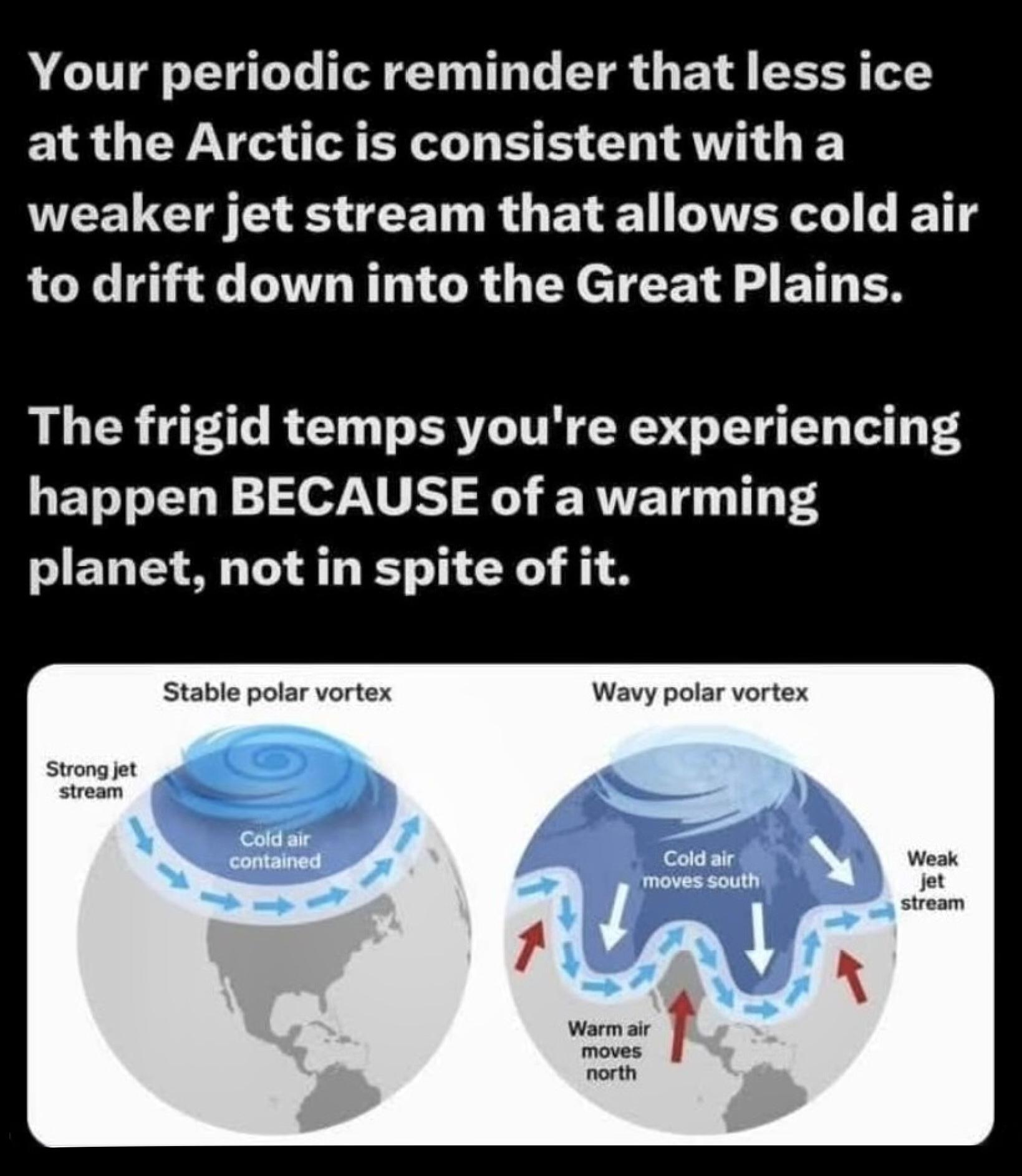Fun fact, when the jet stream gets perturbed like that and develops the sinusoidal deviations that we are experiencing, it's called a Rossby wave.
These waves are actually super normal as the jetstream shifts with the seasons and moves north/south, especially when in a La Niña phase of the ENSO, which we are in right now.
The Hadley circulation cells whose boundaries define the jet stream are driven by convection. The US lies right along a jetstream boundary between two cells, and just downwind from the pacific ocean, so our weather is particularly sensitive to the temperature differences across the pacific ocean.
El Niño patterns have a hot equatorial pacific ocean which drives significant convection on the southern cell of the jet stream crossing the US, stabilizing it. La Niña patterns have a smaller gradient between the temperatures in the cells to the north and south of the relevant jet stream, especially as climate change relatively warms the arctic faster, leading to higher amplitude destabilizations during La Niña patterns like we are experiencing now.
More fun facts about these Rossby waves: they have been proposed as the mechanism to drive the eddies that end up forming planets in protoplanetary disks around baby stars (see the wikipedia page for Rossby waves above), and as the mechanism behind the hexagonal shape of Saturn's polar cell. Worth noting that the exact mechanism for that hexagon is still highly debated, but Peter Gierasch used to have a fun model using a modified record turn table to create a rossby wave that formed a hexagon as a proof-of-concept that has stuck with me.

